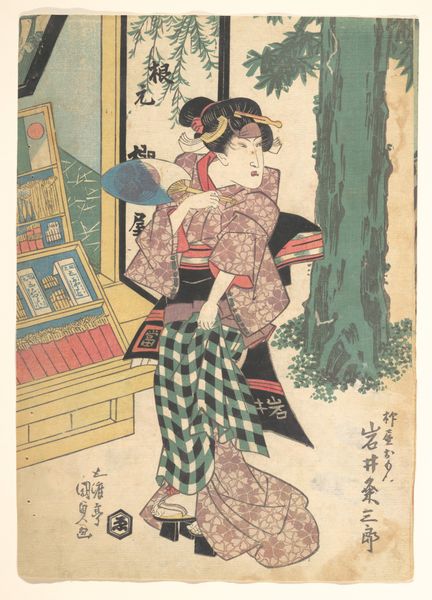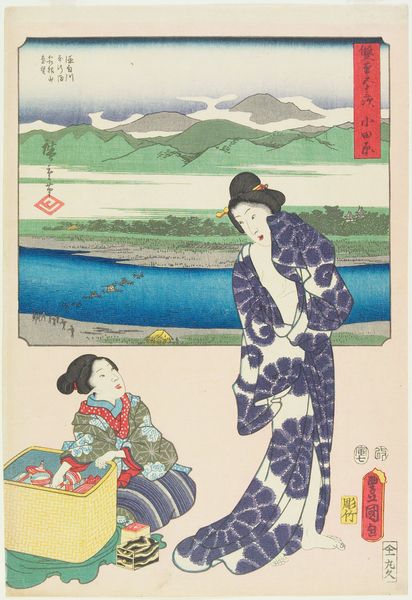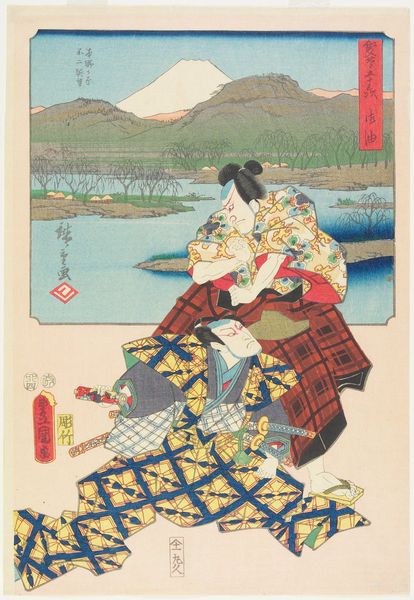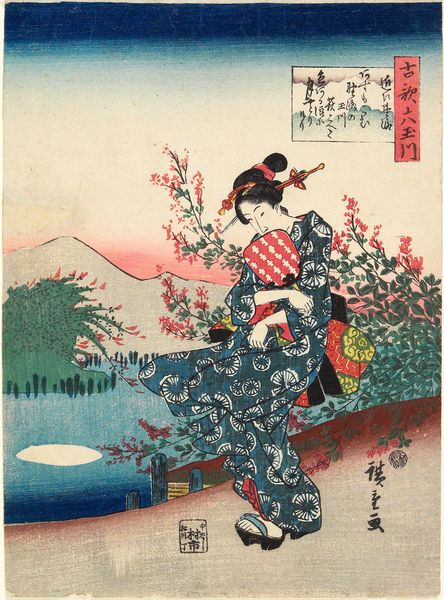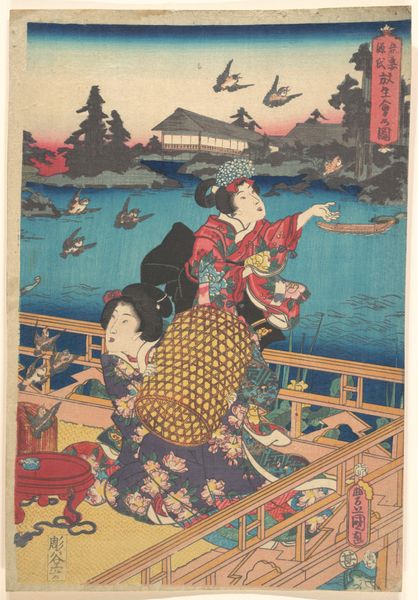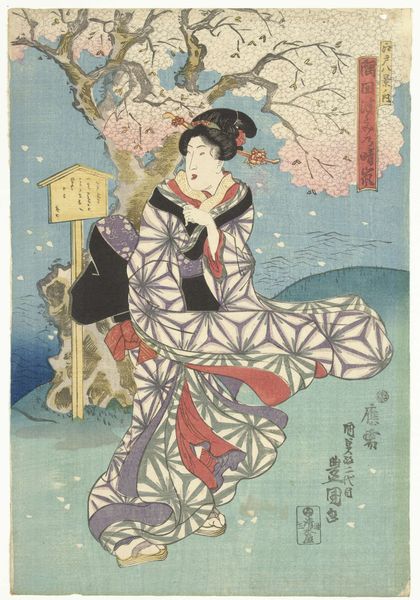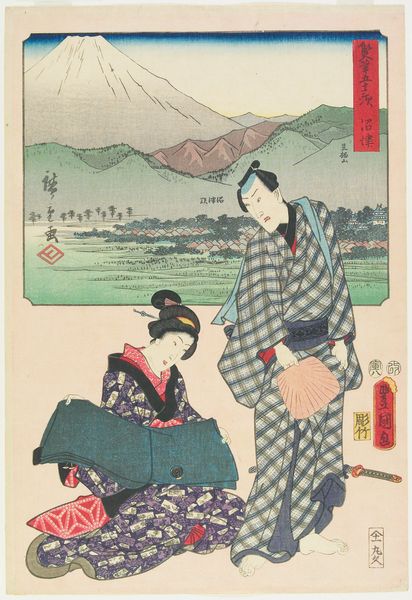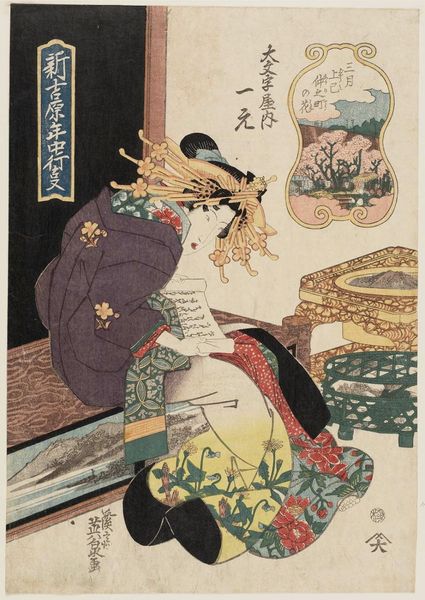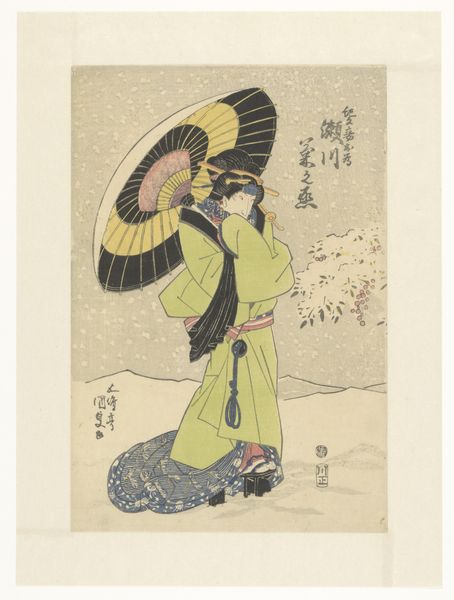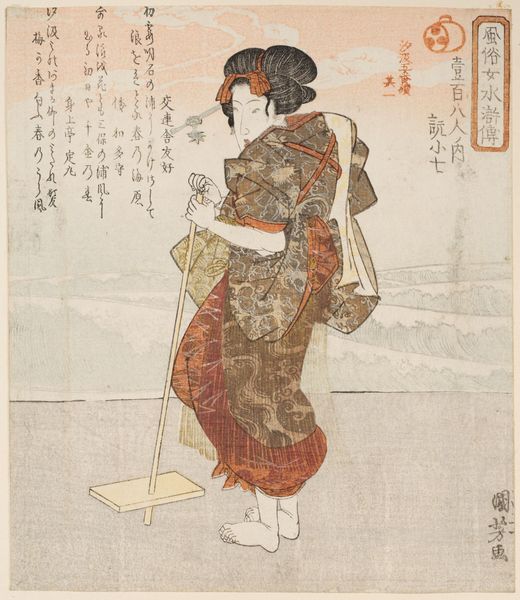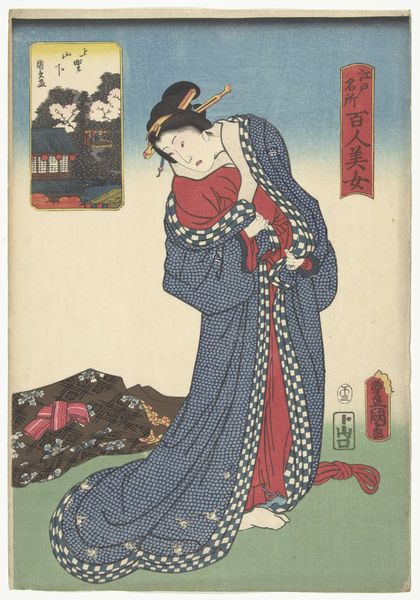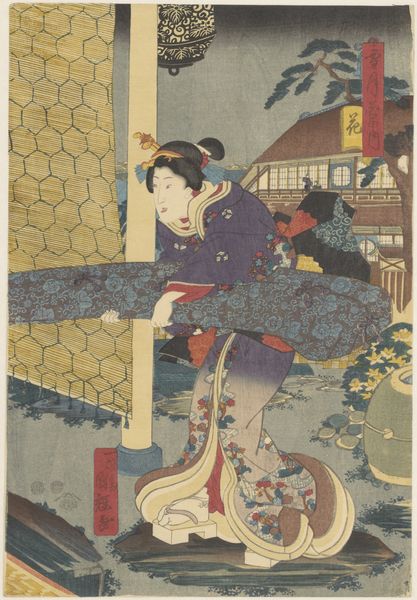
Shimada Station (Shimada shuku), No. 24 from an untitled series of the Fifty-three Stations of the Tôkaidô Road 1830
0:00
0:00
print, woodblock-print
#
portrait
# print
#
asian-art
#
landscape
#
ukiyo-e
#
handmade artwork painting
#
woodblock-print
#
watercolour illustration
#
genre-painting
Copyright: Public domain
Curator: Keisai Eisen's woodblock print, "Shimada Station," part of his series "Fifty-three Stations of the Tōkaidō Road," depicts a lone woman in transit. I see it carrying visual information that reveals cultural attitudes toward journey, labor, and gender roles in 19th-century Japan. Editor: It's incredibly delicate, the color palette muted and calm despite the busy scene in the background. There's a sense of melancholy that emanates from the central figure's posture and gaze, and there is an evident dichotomy between the woman in the foreground versus the landscape, so occupied by leisure activities in the background. Curator: It does carry a palpable tension. The figure dominates the immediate space. The barefoot traveler pauses before a vibrant, populated landscape—a journey that's less idyllic and more arduous, suggested perhaps in her weary posture. The artist skillfully uses contrast to emphasize this—her dark clothing against the landscape filled with whites, reds, greens. It speaks to the varied experiences within society. The distant scene, perhaps, indicates those for whom travel is leisure? Editor: I agree, that distinction is crucial. This series, as a whole, perpetuates and highlights the spectrum of people who inhabited the post roads of Japan, the travelers that were the lifeblood of Japanese commercial infrastructure in this period. Look at how her kimono is slightly disheveled. There's labor embedded here, contrasting sharply with the figures depicted further afield relaxing by the riverbed or traveling without the need to walk. Do you see it as an attempt to represent marginalized figures against idealized landscapes? Curator: It's certainly possible. We can also understand how travel in itself functions as a recurring symbol throughout cultural imaginaries and history. Eisen captures that delicate balance of freedom and confinement in a period defined by strict social stratifications. We shouldn't forget the woman also carries zori sandals, she might just be anticipating the long trek ahead, and about to prepare herself by stepping on to them and resuming her pilgrimage. Editor: The psychological element—the expression of momentary weariness and the anticipation of a laborious journey. Those, for me, are among its most intriguing visual themes, not because the subject is the labor class specifically but because she exists as a subject navigating constraints that define a particular moment in history. Curator: Ultimately, the enduring resonance stems from its complex interplay of journey, pause, and unspoken narrative. The power of symbolism remains ever-compelling. Editor: For me, Eisen offers a small window into the realities for women of this period.
Comments
No comments
Be the first to comment and join the conversation on the ultimate creative platform.
